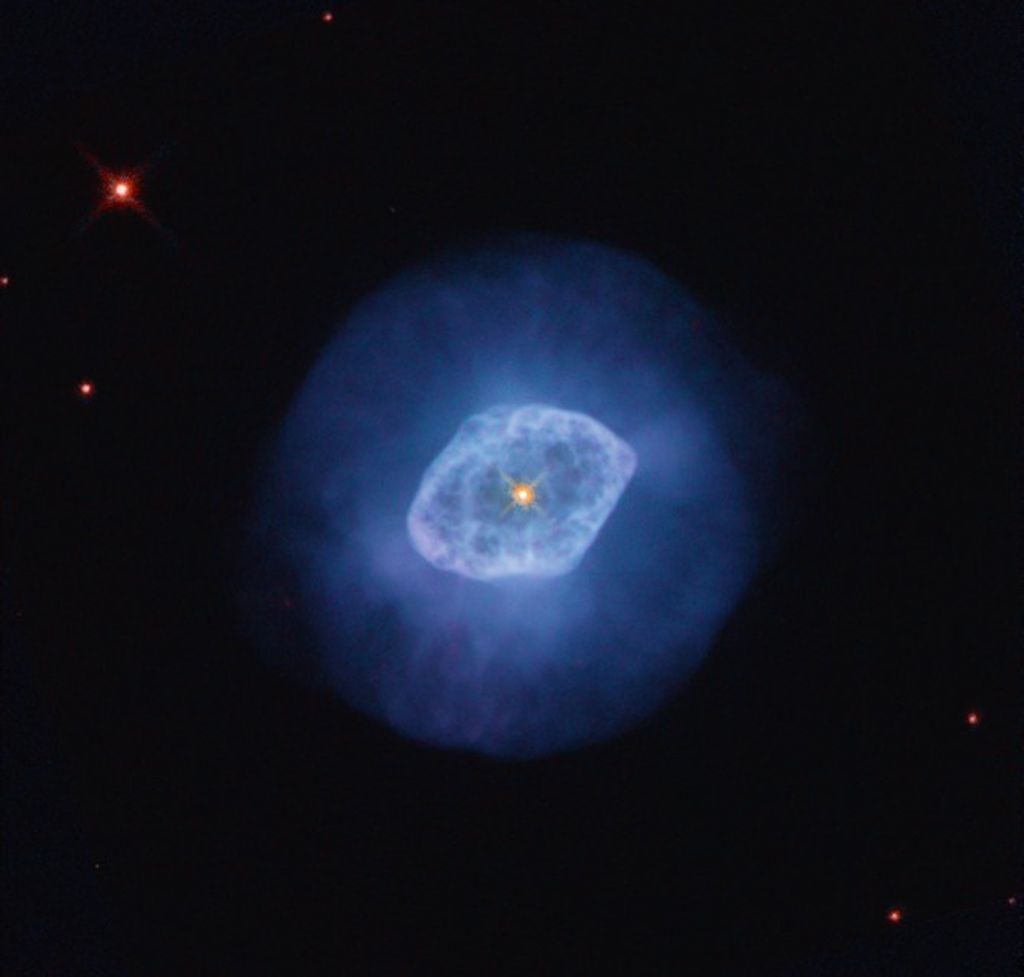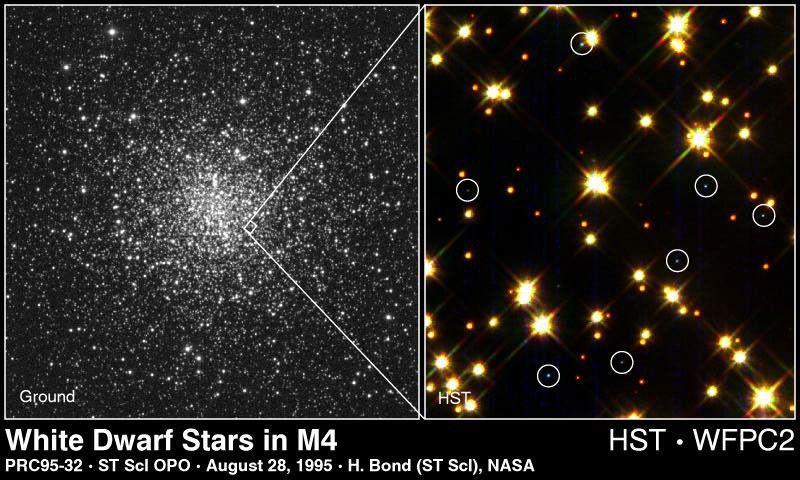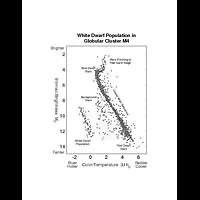Peering deep into the globular star cluster M4 with NASA's Hubble Space Telescope, Canadian and American astronomers have discovered a large number of "stellar corpses," called white dwarf stars, which may be used eventually to refine age estimates of the universe.
The observation, made by a team led by Harvey Richer of the University of British Columbia, Vancouver, Canada, was so sensitive that even the brightest of the detected white dwarfs was no more luminous than a 100-watt light bulb seen at the Moon's distance (239,000 miles).
The Hubble results will allow astronomers to refine theoretical predictions of the rate at which white dwarfs cool - an important prerequisite for making reliable estimates for the age of the universe and our Milky Way galaxy, based on white dwarf temperatures. Present estimates for the universe's age range from eight to twenty billion years, and refining this value is a key goal for modern astronomy and the Hubble telescope.
A white dwarf is the burned-out core of a collapsed star that, like a dying ember, slowly cools and fades away. However, the universe is not yet old enough for any white dwarfs to have cooled off completely to become invisible black dwarfs. White dwarf temperatures can therefore be used as "cosmic clocks" for estimating the age of the universe independently from other techniques.
A globular cluster like M4 contains hundreds of thousands of stars visible with ground-based telescopes. "We expected that the typical globular cluster should also contain about 40,000 white dwarfs. However, white dwarfs are extremely faint, and to date no ground or space-based telescope has been able to reveal more than a handful of them in any star cluster," said Richer. By exposing with Hubble's Wide Field and Planetary Camera 2 for five hours, Richer's team was able to detect more than 75 white dwarfs in one small area of M4. Analysis of the Hubble images, done with computer software developed by Peter Stetson at the National Research Council of Canada, Victoria, British Columbia. The faintest white dwarfs are 40 times fainter than the brightest ones in the cluster.
"Even longer exposures with Hubble could conceivably reveal the ages of the faintest and oldest white dwarfs in M4. This would be a crucial way to distinguish between recent divergent values for the age of the universe, since its age cannot be less than the age of the oldest white dwarfs in M4," said team member Howard Bond of the Space Telescope Science Institute in Baltimore, MD.
A white dwarf contains most of the original mass of a star, but has contracted to an extremely dense and faint object about the size of the Earth. A golf ball-sized piece of a white dwarf would weigh more than a ton. Because of its small size, high density, and initially hot temperature, it takes billions of years for a white dwarf to radiate all of its residual heat into space.
Located 7,000 light-years away in the direction of the constellation Scorpius and visible in a pair of binoculars, M4 (the fourth object in the Messier catalog of star clusters and nebulae) is the nearest globular cluster to the Earth. Globular clusters like M4 were born early in the history of the Milky Way, and today are veritable stellar retirement communities. M4 is so ancient (estimated to be 14 billion years old) that all of its stars that began with 80% or more of the Sun's mass have already evolved to become red giants, followed by a collapse to a white dwarf. (Our Sun will not become a white dwarf for another five billion years.)
Details of the M4 study will be published in the Astrophysical Journal Letters in September. Other participants in the research are Gregory Fahlman, Rodrigo Ibata, and Georgi Mandushev (University of British Columbia), Roger Bell (University of Maryland), Michael Bolte (University of California, Santa Cruz), William Harris (McMaster University), James Hesser (National Research Council of Canada), Carlton Pryor (Rutgers University), and Don VandenBerg (University of Victoria).


































